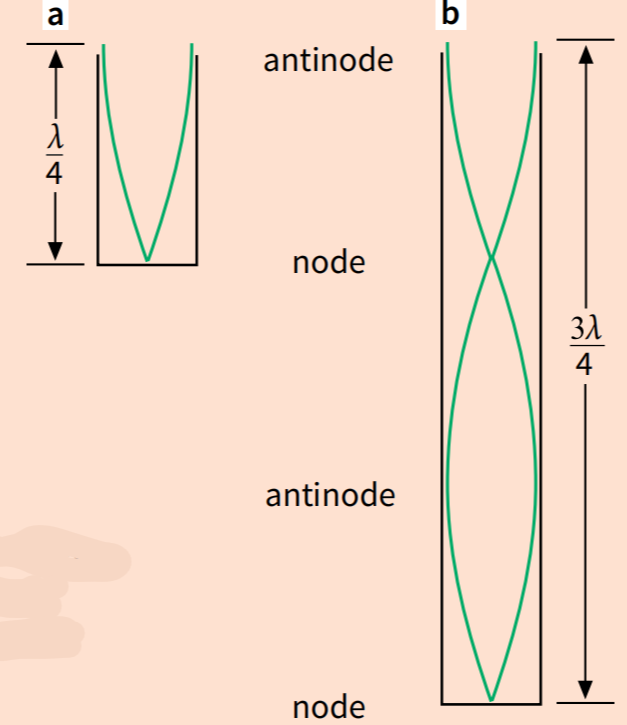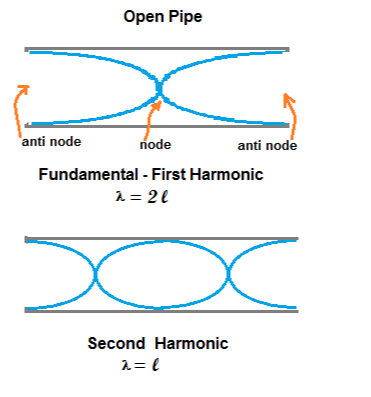Tubes with closed ends
- When air is blown into a tube with one closed end, the air at the closed end cannot vibrate, forming a node, a point of no displacement.
- The air at the open end can vibrate freely, creating an antinode, a point of maximum displacement.
- The simplest standing wave that can fit inside this tube has a node at the closed end and an antinode at the open end (ref to a). The wave will have a wavelength of 4\( l \), where \( l \) is the length of the tube.
- The wavelengths that can fit the tube follow the equation \( \frac{4}{x} l \), where x is 1, 3, 5, 7... . For example:
4\( l \), \( \frac{4}{3} l \), \( \frac{4}{5} l \). - If a speaker is placed at the open end of the tube, a loud sound will be heard if the sound wave played by the speaker has a wavelength that fits the tube.

